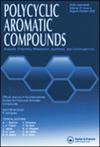A Review on Synthesis and Biological Applications of Quinoline Derivative as Fused Aromatic Compounds
IF 2.4
3区 化学
Q2 CHEMISTRY, ORGANIC
引用次数: 0
Abstract
Quinoline is a N-containing heterocyclic organic compounds with significant biological importance in pharmaceuticals field as well as natural products. They exhibit excellent pharmacological activities. To synthesize quinoline and their derivatives several synthetic methods have reported, such as conventional method, ultrasonic method, microwave (MW) irradiation method, with or without catalytic reaction, which have various pharmacological and biological activities, such as antibacterial, antifungal, anticancer, anti-HIV, antimalarial, antitumor, and anti-inflammatory activity. The objective of this review is to compile various synthetic methods were used for the formation of the Quinoline derivatives and their biological importance, such as antibacterial, anticancer, anti-microbial, antimalarial, antileishmanial, antifungal, and anti-inflammatory during 2010–2023, which will help the researchers how are working in this area.
喹啉衍生物作为融合芳香族化合物的合成与生物应用综述
喹啉是一种含 N 的杂环有机化合物,在医药和天然产品领域具有重要的生物学意义。它们具有出色的药理活性。合成喹啉及其衍生物的方法有多种,如传统方法、超声波法、微波(MW)辐照法、催化反应或非催化反应等,这些方法具有多种药理和生物活性,如抗菌、抗真菌、抗癌、抗 HIV、抗疟、抗肿瘤和抗炎活性。本综述旨在汇编 2010-2023 年间用于生成喹啉衍生物的各种合成方法及其生物学重要性,如抗菌、抗癌、抗微生物、抗疟疾、抗利什曼病、抗真菌和抗炎等,这将有助于在该领域开展工作的研究人员。
本文章由计算机程序翻译,如有差异,请以英文原文为准。
求助全文
约1分钟内获得全文
求助全文
来源期刊

Polycyclic Aromatic Compounds
化学-有机化学
CiteScore
3.70
自引率
20.80%
发文量
412
审稿时长
3 months
期刊介绍:
The purpose of Polycyclic Aromatic Compounds is to provide an international and interdisciplinary forum for all aspects of research related to polycyclic aromatic compounds (PAC). Topics range from fundamental research in chemistry (including synthetic and theoretical chemistry) and physics (including astrophysics), as well as thermodynamics, spectroscopy, analytical methods, and biology to applied studies in environmental science, biochemistry, toxicology, and industry. Polycyclic Aromatic Compounds has an outstanding Editorial Board and offers a rapid and efficient peer review process, as well as a flexible open access policy.
 求助内容:
求助内容: 应助结果提醒方式:
应助结果提醒方式:


